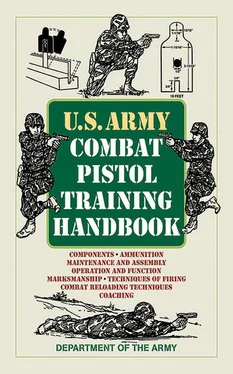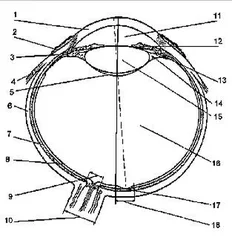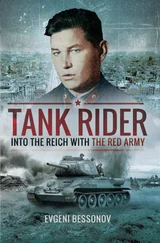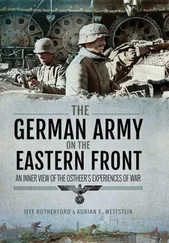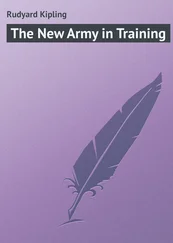Each time a cartridge is fired, the parts inside the weapon function in a given order. This is known as the functioning cycle or cycle of operation. The cycle of operation of the weapon is divided into eight steps: feeding, chambering, locking, firing, unlocking, extracting, ejecting, and cocking. The steps are listed in the order in which functioning occurs; however, more than one step may occur at the same time.
a. A magazine containing ammunition is placed in the receiver. The slide is pulled fully to the rear and released. As the slide moves forward, it strips the top round from the magazine and pushes it into the chamber. The hammer remains in the cocked position, and the weapon is ready to fire.
b. The weapon fires one round each time the trigger is pulled. Each time a cartridge is fired, the slide and barrel recoil or move a short distance locked together. This permits the bullet and expanding powder gases to escape from the muzzle before the unlocking is completed.
c. The barrel then unlocks from the slide and continues to the rear, extracting the cartridge case from the chamber and ejecting it from the weapon. During this rearward movement, the magazine feeds another cartridge, the recoil spring is compressed, and the hammer is cocked.
d. At the end of the rearward movement, the recoil spring expands, forcing the slide forward, locking the barrel and slide together. The weapon is ready to fire again. The same cycle of operation continues until the ammunition is expended.
e. As the last round is fired, the magazine spring exerts upward pressure on the magazine follower. The stop on the follower strikes the slide stop, forcing it into the recess on the bottom of the slide and locking the slide to the rear. This action indicates that the magazine is empty and aids in faster reloading.
SECTION IV. PERFORMANCE PROBLEMS
Possible performance problems of M9 and M11 pistols are sluggish operation and stoppages. This section discusses immediate and remedial action to correct such problems.
The following malfunctions may occur to the M9 and M11 pistols. Take these corrective actions to correct any problems that may occur.
a. Sluggish Operation.Sluggish operation is usually due to excessive friction caused by carbon build up, lack of lubrication, or burred parts. Corrective action includes cleaning, lubricating, inspecting, and replacing parts as necessary.
b. Stoppages.A stoppage is an interruption in the cycle of operation caused by faulty action of the pistol or faulty ammunition. Types of stoppages are:
• Failure to feed.
• Failure to chamber.
• Failure to lock.
• Failure to fire.
• Failure to unlock.
• Failure to extract.
• Failure to eject.
• Failure to cock.
Immediate action is the action taken to reduce a stoppage without looking for the cause. Immediate action is taken within 15 seconds of a stoppage.
a. Ensure the decocking/safety lever is in the FIRE position.
b. Squeeze the trigger again.
c. If the pistol does not fire, ensure that the magazine is fully seated, retract the slide to the rear, and release.
d. Squeeze the trigger.
e. If the pistol again does not fire, remove the magazine and retract the slide to eject the chambered cartridge. Insert a new magazine, retract the slide, and release to chamber another cartridge.
f. Squeeze the trigger.
g. If the pistol still does not fire, perform remedial action.
Remedial action is the action taken to reduce a stoppage by looking for the cause.
a. Clear the pistol.
b. Inspect the pistol for the cause of the stoppage.
c. Correct the cause of the stoppage, load the pistol, and fire.
d. If the pistol again fails to fire, disassemble it for closer inspection, cleaning, and lubrication.
CHAPTER 2
PISTOL MARKSMANSHIP TRAINING
Marksmanship training is divided into two phases: preparatory marksmanship training and range firing. Each phase may be divided into separate instructional steps. All marksmanship training must be progressive. Combat marksmanship techniques should be practiced after the basics have been mastered.
SECTION I. BASIC MARKSMANSHIP
The main use of the pistol is to engage an enemy at close range with quick, accurate fire. Accurate shooting results from knowing and correctly applying the elements of marksmanship. The elements of combat pistol marksmanship are:
• Grip.
• Aiming.
• Breath control.
• Trigger squeeze.
• Target engagement.
• Positions.
A proper grip is one of the most important fundamentals of quick fire. The weapon must become an extension of the hand and arm; it should replace the finger in pointing at an object. The firer must apply a firm, uniform grip to the weapon.
a. One-Hand Grip. Hold the weapon in the nonfiring hand; form a V with the thumb and forefinger of the strong hand (firing hand). Place the weapon in the V with the front and rear sights in line with the firing arm. Wrap the lower three fingers around the pistol grip, putting equal pressure with all three fingers to the rear. Allow the thumb of the firing hand to rest alongside the weapon without pressure (Figure 2-1). Grip the weapon tightly until the hand begins to tremble; relax until the trembling stops. At this point, the necessary pressure for a proper grip has been applied. Place the trigger finger on the trigger between the tip and second joint so that it can be squeezed to the rear. The trigger finger must work independently of the remaining fingers.
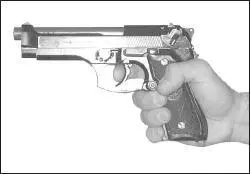
Figure 2-1. One-hand grip.
NOTE:If any of the three fingers on the grip are relaxed, the grip must be reapplied.
b. Two-Hand Grip. The two-hand grip allows the firer to steady the firing hand and provide maximum support during firing. The nonfiring hand becomes a support mechanism for the firing hand by wrapping the fingers of the nonfiring hand around the firing hand. Two-hand grips are recommended for all pistol firing.
WARNING
Do not place the nonfiring thumb in the rear of the weapon. The recoil upon firing could result in personal injury.
(1) Fist Grip. Grip the weapon as with the one-hand grip. Firmly close the fingers of the nonfiring hand over the fingers of the firing hand, ensuring that the index finger from the nonfiring hand is between the middle finger of the firing hand and the trigger guard. Place the nonfiring thumb alongside the firing thumb (Figure 2-2).
NOTE:Depending upon the individual firer, he may chose to place the index finger of his nonfiring hand on the front of the trigger guard since M9 and M11 pistols have a recurved trigger guard designed for this purpose.
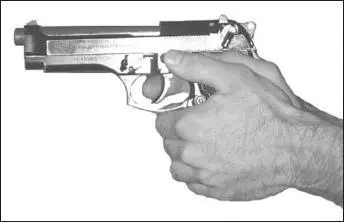
Figure 2-2. Fist grip.
(2) Palm-Supported Grip. This grip is commonly called the cup and saucer grip. Grip the firing hand as with the one-hand grip. Place the nonfiring hand under the firing hand, wrapping the nonfiring fingers around the back of the firing hand. Place the nonfiring thumb over the middle finger of the firing hand (Figure 2-3).
Читать дальше
